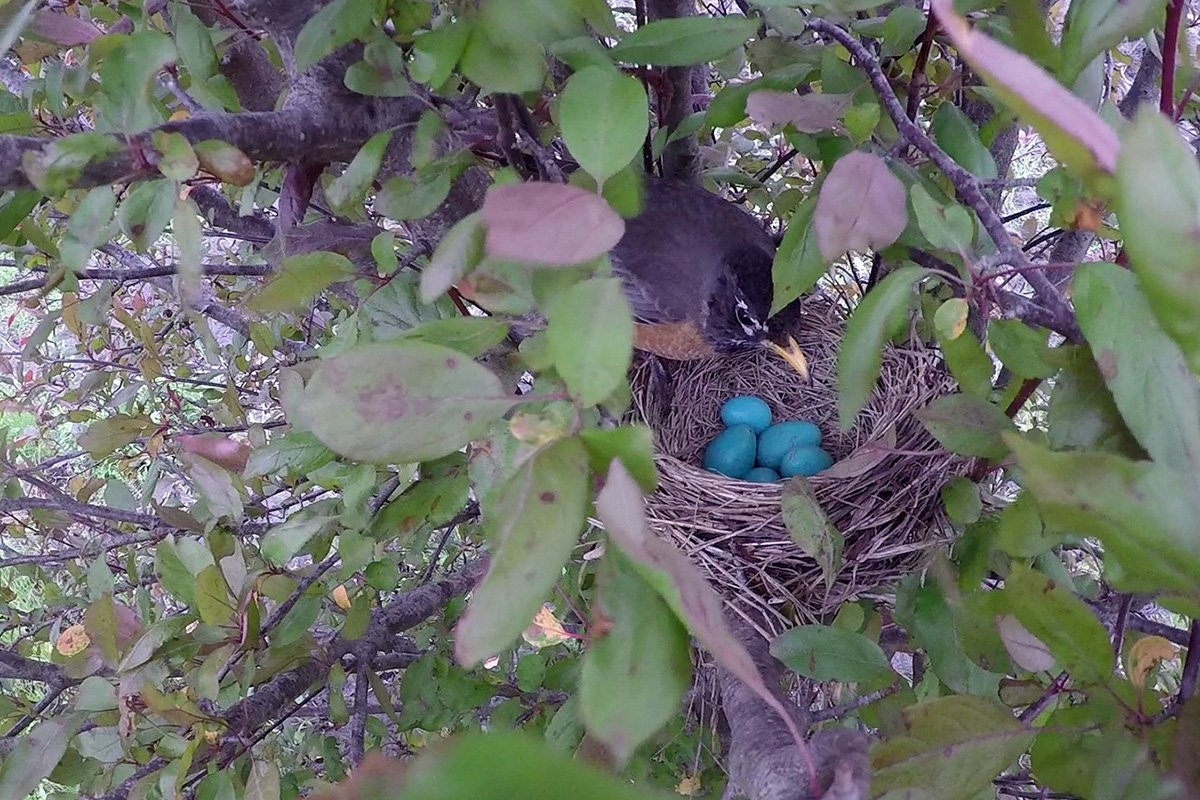Just as humans are usually left- or right-handed, other species sometimes prefer one appendage, or eye, over the other. A new study reveals that American robins that preferentially use one eye significantly more than the other when looking at their own clutch of eggs are also more likely to detect, and reject, a foreign egg placed in their nest by another bird species – or by a devious scientist.
The robins have no eye-preference when a decoy egg is a different color than their own eggs, the researchers found. But when a decoy egg mimics their own in color, they are better able to distinguish the foreign egg if they rely on one eye more than the other.
The new results are reported in the journal Royal Society journal Biology Letters.

The findings are important because American robins and other birds are often targeted by brood parasitic species, such as brown-headed cowbirds, that lay their eggs in other birds’ nests. Some birds targeted by such parasites have learned to identify and reject the intruders’ eggs, thus avoiding raising the chicks of another species while neglecting their own chicks’ care.
[ad_336]
Previous studies have shown that many vertebrate species prefer to use one eye over the other for particular tasks. This reflects specialization in the different hemispheres of the brain, scientists say.
For example, a study of the domestic chick found that individuals with a strong preference for one eye over the other are faster than others at detecting potential predators and are better able to distinguish between grain and pebbles. Other research reveals that domestic chicks, adult hens and Japanese quail are better at discriminating between familiar and unfamiliar individuals when they use their left eyes. Black-winged stilts use their right eyes most often when engaged in predatory pecking and their left eyes for looking at females. Australian green tree frogs tend to keep an eye on competitors – their left eye, specifically.

“We were interested in this phenomenon in the context of recognizing and rejecting brood parasites,” said University of Illinois evolution, ecology and behavior professor Mark E. Hauber, who led the new research with graduate student Hanna Scharf.
“We wanted to know, specifically, whether American robins, which are known to be adept at spotting and ejecting cowbird eggs, used one eye preferentially over the other.”
The researchers followed 26 robin nests over two years. They mounted cameras on the nests to track how the birds behaved in response to a 3D-printed decoy egg placed in their nests. Some of the decoy eggs were painted blue like the robins’ own eggs, and some were white, resembling the background color of cowbird eggs.
[rand_post]
“We saw that robins looking at the white eggs had no preference for which eye they used,” Scharf said.
“But when they looked at the blue decoy eggs, the birds exhibited what we call ‘eyedness,’ preferring to look at the eggs with one of their eyes much more often than with the other. Some looked more with their right eye, some with their left. And those that were more biased in their eye use tended to be more successful at ejecting the foreign eggs we placed in their nest.”
The findings suggest that robins – and perhaps other bird species that can identify and reject outsider eggs – have evolved specialized abilities in one hemisphere of the brain that help them avoid brood parasites, Hauber said.